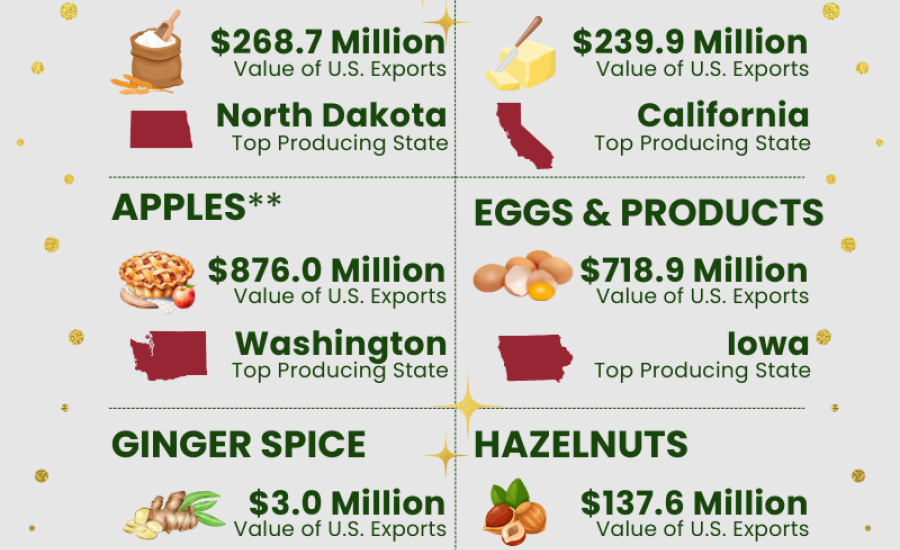Browse Data and Analysis
Filter
Search Data and Analysis
- 505 results found
- (-) Tree Nuts
- Clear all
U.S. agricultural exports are a critical source of farm income. The USDA Economic Research Service estimates that on average 23 percent of the output of nonmanufactured agricultural products were exported between 2013 and 2022.
The report provides a comprehensive analysis of the tree nut market in Brazil, highlighting significant opportunities for U.S. exporters.
Vietnam offers abundant opportunities for exporting consumer-oriented products, despite the challenges of recovering from the COVID-19 pandemic and dealing with high inflation. The Vietnamese economy is poised for significant expansion in the coming decades. With a burgeoning population and a growing middle class, Vietnamese consumers are becoming more discerning about the origin and composition of their food.
This biannual report includes data on U.S. and global trade, production, consumption and stocks, as well as analysis of developments affecting world trade in tree nuts.
India is the world’s most populous country and boasts one of the fastest growing economies in the world. As Indian households continue to reach higher levels of consumer spending, imported agricultural products are becoming more accessible to a larger number of people.
Thanks to consumers' growing preference for healthy food and earlier successful marketing of nuts and dried fruit products across the country, China's consumption and demand for nuts and dried fruit has exploded over the past few years.
Infographic discussing holiday baking as it relates to 2022 U.S. agricultural export totals and top producing states.
Ample opportunities exist for U.S. agricultural exports to South Korea. Highlighted in the chart above, U.S. agricultural product exports were a record $9.5 billion in 2022, up 2 percent from 2021. South Korea is the sixth largest export market for the United States, thanks in part to a successful free trade agreement (KORUS) between the two countries and a robust demand for high-quality U.S. food products.
Customs tariffs for walnuts and almonds from all origins have increased to 15 percent. The 10 percent Section 232 retaliatory tax on U.S.-originated walnuts and almonds continues.
In marketing year (MY) 2023/24, Post estimates walnut production to increase by 3.1 percent and reach 198,000 metric tons (MT).
FAS China forecasts commercial production of in-shell walnuts to remain unchanged from the previous year at 1.4 MMT in MY 2023/24. Cold winter temperatures in Xinjiang damaged the almond crop this year.
The “off-year” for production will push Turkiye’s pistachio production lower in Marketing Year (MY) 2023/24. The production of almonds and walnuts is forecast slightly higher but hazelnut production is expected to go down.


